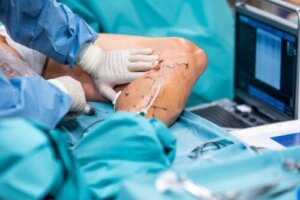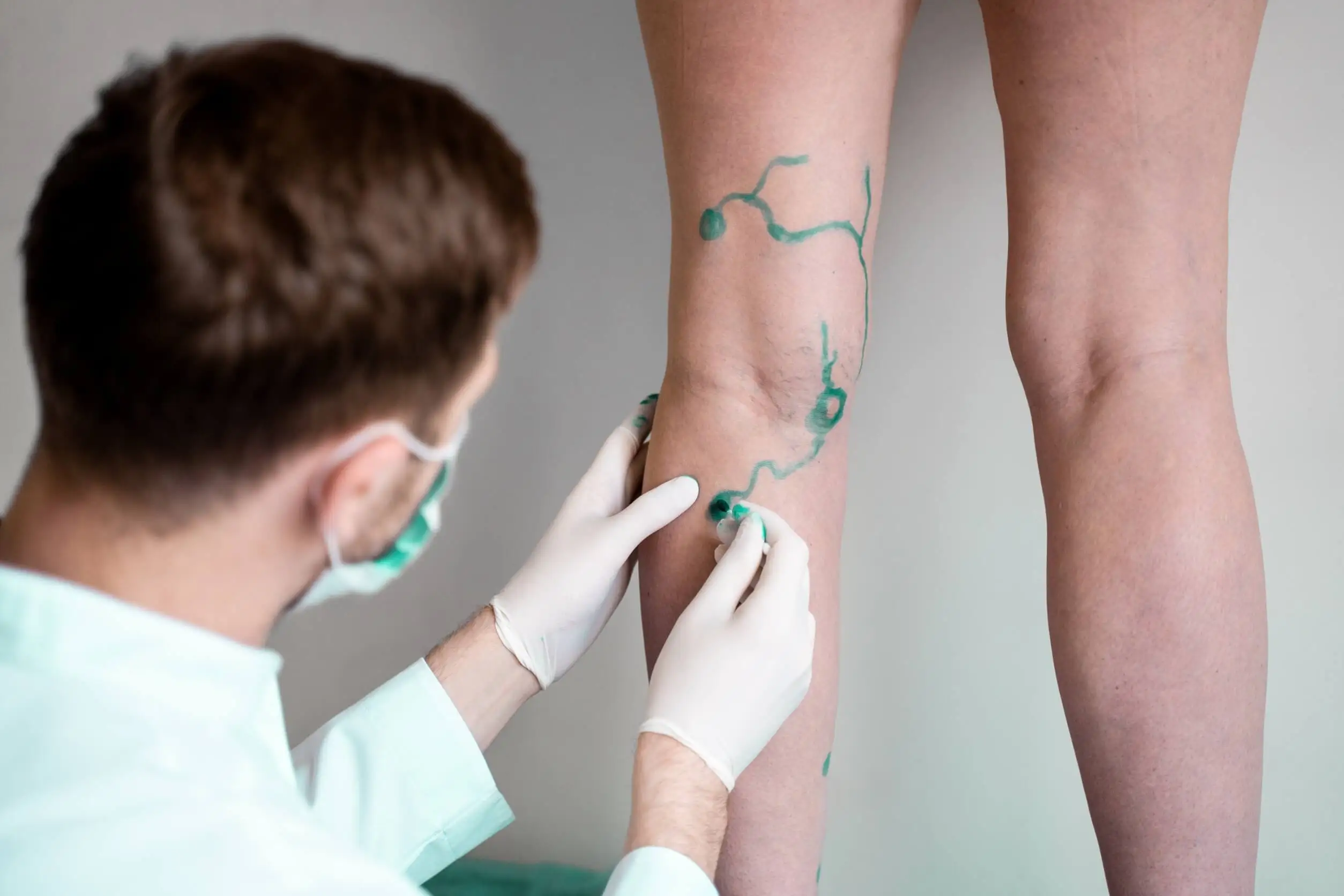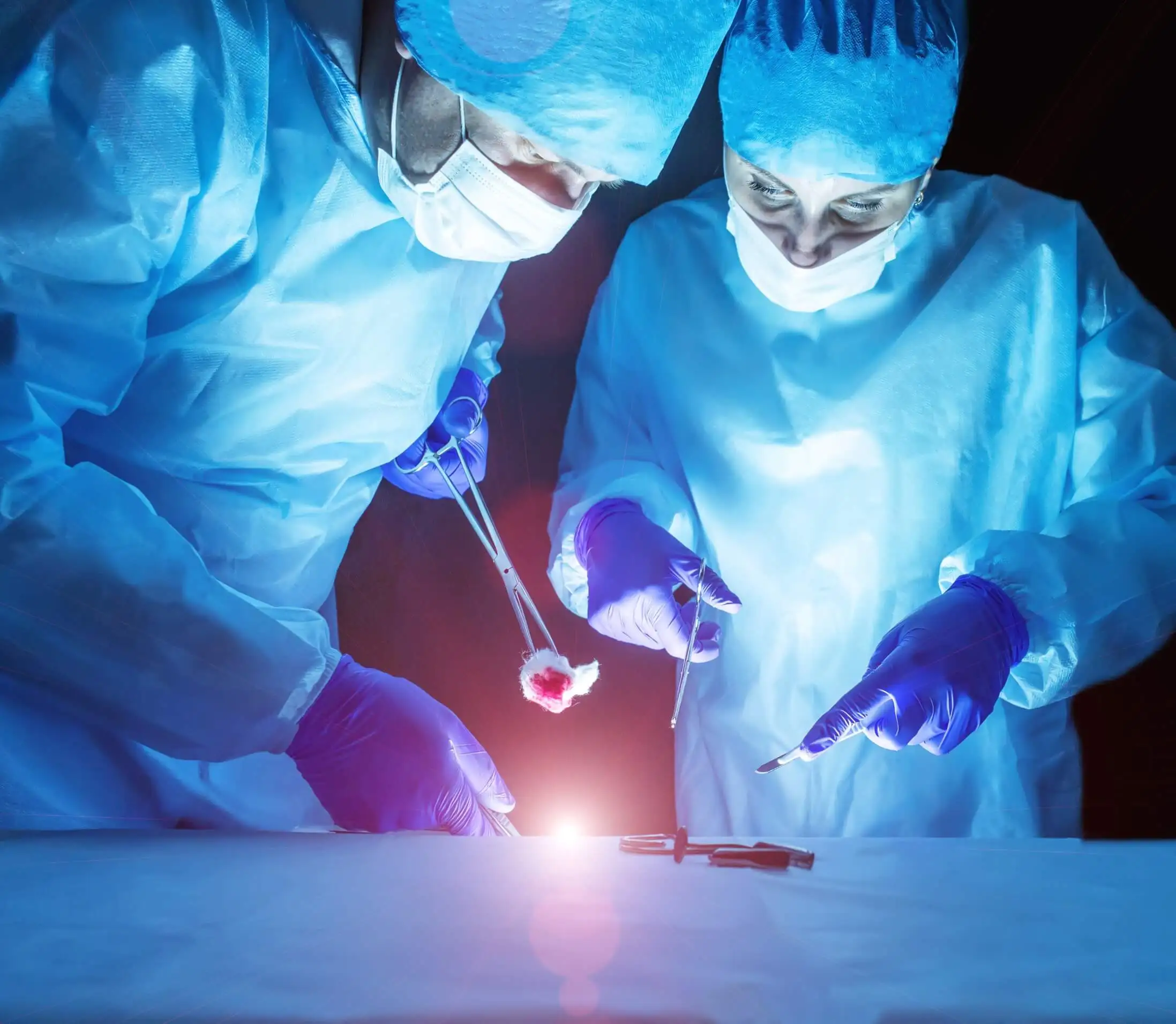Endolaser Surgery for Varicose Veins: What Is It and What Are Its Benefits?


Reviewed and approved by the nurse Leidy Mora Molina
Endolaser surgery is a procedure to treat the problem of varicose veins. For this purpose, a device is used, with which heat is administered to the interior of the diseased veins to seal them.
It is said to be effective, minimally invasive, and does not require hospitalization. In addition, there are no risks and relatively few side effects. Next, we will detail more about this technique.
Varicose veins: causes and treatments
Varicose veins are abnormal dilatations of the veins. Although they are commonly observed in the legs, they also appear in other parts of the body. There are even vulvar and even esophageal varicose veins.
The cause of this problem has to do with the weakness of the venous walls and valves, which results in an irregular blood flow towards the heart. Thus, the veins become enlarged and deformed.

In turn, there are several risk factors related to the appearance of varicose veins. Among these we find:
- Pregnancy
- Being overweight or obese
- A sedentary lifestyle
- Standing or sitting for long periods of time
- The side effect of contraceptives.
- The older you are, the greater the risk
- Sex: according to research, this condition is more frequent in women
- Genetic factors, among others
Despite what might be believed, studies have not established a clear correlation between alcoholism or smoking and the presence of varicose veins.
We think you may also enjoy reading this article: Important! Guidelines to Reduce the Discomfort of Varicose Veins in the Summer
Endolaser surgery for varicose veins
When it comes to the treatment for varicose veins, there are several options, from home remedies to cosmetic procedures. In this regard, the following are mentioned:
- Surgery (phleboextraction)
- Sclerotherapy
- Ultrasound treatment
- Radio waves
- Use of compression stockings
- Green clay
- Cayenne pepper, among others
Additionally, there is endolaser surgery for varicose veins. This is a procedure that consists of introducing a diode laser of 300 to 600 microns into the vein.
The effect of the endolaser is produced due to the fact that the blood transmits the energy, without altering it, to the adjacent structures. When a temperature of 85 °C is reached, a photocoagulation effect is produced inside the vein, achieving the progressive closure of the vein, to provide a definitive solution to the problem of varicose veins.
Like this article? You may also like to read: How to Make a Garlic and Lemon Ointment for Varicose Veins
How is endolaser surgery for varicose veins performed?
When considering getting endolaser surgery for the treatment of varicose veins, the patient should go to the consultation to know his general health status. In particular, he/she should be evaluated by the person who will be in charge of the anesthesia.
No prior preparation is necessary. The procedure follows a series of steps, which are described below:
- The drawing and marking of the veins to be treated are done with a dermographic pencil, guided by ultrasound.
- Local anesthesia: Lidocaine is applied to the puncture site and the patient waits for it to take effect.
- Intumescence: The venous area is separated from the skin by injecting saline into the subcutaneous tissue.
- Introduction of the device: A small dissection is performed to introduce the fiber optic catheter.
- Energy release: The laser is emitted into the vein.
- Occlusion is checked by Doppler ultrasound.
These last steps are repeated on the different veins to be treated. In some cases, especially in people with obesity, the point where the fiber is located is monitored with an echo for safety before emission.
The total duration of the procedure is usually less than an hour. After a short recovery period, the patient is discharged and can return to daily activities.
The advantages and benefits of endolaser surgery

Endolaser surgery is very effective in treating insufficient venous sectors and helps in the definitive elimination of the treated varicose veins. In most cases, only one treatment session is sufficient.
As has been pointed out, this is a minimally invasive procedure, which does not require hospitalization. Therefore, unlike conventional surgery, no incisions or stitches are made and no bandages are applied.
Moreover, recovery is immediate. It doesn’t require rest nor does it affect the patient’s subsequent daily activities, who can immediately return to work.
Finally, treatment with endolaser surgery improves the hemodynamics of the extremities and helps prevent possible complications that may occur as a result of varicose veins, such as ulcers or thrombophlebitis.
The risks and contraindications of endolaser surgery
This is a non-aggressive procedure and, since it’s performed under anesthesia, it’s painless. However, in some cases, very few, there may be slight sensitivity as well as bruising, which disappears after a short time.
Currently, it can be applied to all types of varicose veins, even in people who have previously undergone surgery for this problem. However, it’s especially recommended when there is ostial insufficiency of the saphenous vein.
The endolaser surgery does not entail major risk, as long as it is performed by a professional with experience in the handling of this technique and it is done under the appropriate conditions.
A problem that requires comprehensive care
Varicose veins can be treated by various procedures, which are quite effective. Once sealed, the vein becomes non-functional. However, since the venous system is very complex, it’s possible that even after an operation, unforeseen ramifications may arise.
In this order of ideas, we must be aware that the treatments eliminate the existing varicose veins at the time. However, especially in people with a predisposition to this condition, the problem can appear again in other areas – that is, in veins that were not affected.
Hence the importance of, on the one hand, following up after the intervention; and, on the other hand, it’s advisable to take some measures to prevent a recurrence. Among them, it’s recommended to exercise regularly, maintain a healthy diet, avoid being overweight, wear compression stockings and avoid tight clothing, as well as avoid wearing high-heeled shoes, among other things.
All cited sources were thoroughly reviewed by our team to ensure their quality, reliability, currency, and validity. The bibliography of this article was considered reliable and of academic or scientific accuracy.
- Ahumada M, Vioque J. Prevalencia de varices en adultos y factores asociados. Medicina Clínica. 2004; 123(17): 647-651.
- Espinóla C, Bernal M, Aucejo M, Villalba J. Prevalencia de varices en miembros inferiores en el personal del Hospital de Clínicas. Rev Chil Cir. 2007; 59(5): 342-347.
- Silva M, Vallejo J, Castrillón R, Calero A, Sañaicela G, Orellana P. Estudio clínico comparativo de los efectos indeseables de los anticonceptivos orales. Rev Fac Cien Med (Quito). 2017; 22(1): 33-35.
- Sánchez B, Moreno M, Soriano P, et al. Tratamiento estético de las várices mediante esclerosis y escleromicrocirugía. Rev Mex Angiol. 2006; 34(2): 63-69.
- Martínez Sanz R, De la Lana R, Marinero González A. Láser endovenoso: tratamiento de las varices por termoesclerosis. Revista Española de Investigaciones Quirúrgicas. 2005; 3(2): 79-82.
- Vásquez R. Varices y sus complicaciones. Bol. Hosp. San Juan de Dios. 1983; 30(2): 108-111.
- Martinessi V, Sánchez Carpio C, Dibenedetto N, Canavoso L, Gerónimo S. Insuficiencia ostial de la safena interna: tratamiento ambulatorio mediante ligadura con preservación de la safena in situ. Rev. Fac. Cienc. Méd. 2007; 64(2): 34-39.
This text is provided for informational purposes only and does not replace consultation with a professional. If in doubt, consult your specialist.








